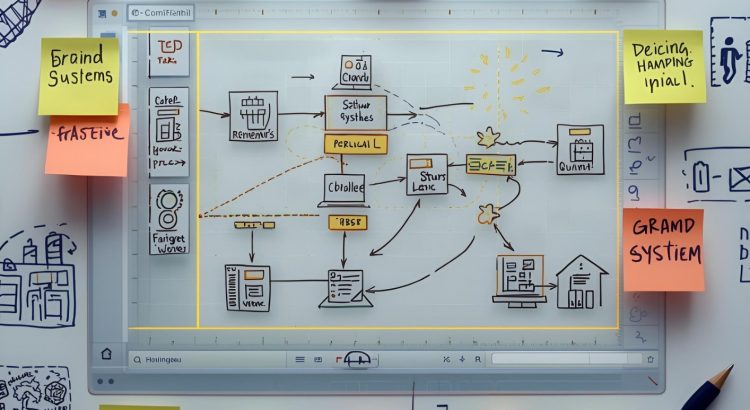Agile teams deliver fast—but often at the expense of solution design. Why conceptual work between user story and implementation needs more space, and how agile principles and systems thinking can be balanced effectively.
In traditional development projects—such as those following a linear V-model—after gathering user and system requirements as completely as possible, a strong focus is placed on architecture and design. The goal is to create a robust system architecture: subsystems, components, and their interfaces are designed to balance non-functional requirements like reliability, performance, regulatory compliance, maintainability, extensibility, and cost.
Agile product development has dispelled the illusion that a product can be built in a single, waterfall-like V-model cycle. Instead, it relies on iterative-incremental development: small, successive steps, early feedback, and starting with a minimum viable product (MVP). These principles are now widely recognized—especially in software development, where release cycles have been drastically shortened.
However, especially in the evolution of existing products, an unfortunate trend has emerged: after capturing requirements—usually in the form of user stories—many teams jump straight into implementation. The conceptual phase, where possible solution options are analyzed, evaluated, and consciously chosen, is often skipped.
Solution design, once a core discipline, has thus become a blind spot in agile practice.
Solution Design in Agile Teams – Balancing Discipline and Agility
The decline of solution design in many agile teams is no accident. The strong focus on delivery speed and customer value per iteration easily shifts attention away from the big picture. Architectural or system-level considerations then feel like a drag on the “deliver, deliver, deliver” momentum. Yet neglecting design comes back to haunt teams—especially when technical debt accumulates, interfaces become chaotic, or product decisions run into physical or regulatory constraints.
Agility and systematic solution design are not mutually exclusive. On the contrary, both aim to create robust, adaptable systems that deliver real value. The key is when and how design work is performed.
1. Make Design Work Visible and Iterative
Instead of treating design as a one-time phase, it should be a continuous process. Teams can schedule design spikes—short, focused iterations where solution options are explored, prototypes are built, or risks analyzed. Crucially, this work must appear in the backlog explicitly, rather than happening “between the lines.”
This keeps solution design part of the agile flow without slowing down iteration speed.
2. Embed System Thinking in the Team
Agile teams benefit from regularly reflecting on the big picture. This can be done through architecture reviews during Team Reviews, design discussions in Refinement sessions, or lightweight systems engineering tools—such as context diagrams, interface maps, or scenario analyses. The important part is that solution design is not the responsibility of a few “architects” or “system engineers” alone, but a shared team capability.
When developing user interfaces, the workflow and operating elements should also be defined before the implementation and coordinated with application specialists. This reduces misunderstandings and increases developers’ understanding of the applications.
System thinking thus becomes a common language—not a hierarchy.
3. Document Decisions Without Bureaucracy
In complex systems, traceability is gold. Lightweight methods like Architectural Decision Records (ADRs) help teams capture decisions and their rationale—without producing thick, unwieldy documentation. This provides orientation for new team members and transparency about technical trade-offs.
The result is a living knowledge base, not a dead documentation graveyard.
4. Balance Doesn’t Happen by Accident
A healthy balance between agility and system discipline doesn’t happen on its own. It requires a shared mindset: courage to make design work visible, trust to make decisions collaboratively, and pragmatism to model only as much as brings real insight.
Teams that cultivate this balance don’t see solution design as bureaucratic overhead—it becomes a strategic competence, combining speed and sustainability.
Conclusion
Solution design is not a relic of the past but a vital part of agile product development—provided it is done consciously, lightly, and continuously. Teams that strengthen this discipline create the foundation for sustainable product quality, clear technical decisions, and long-term development speed.
In short: if you want to deliver fast, you need to design smart.
